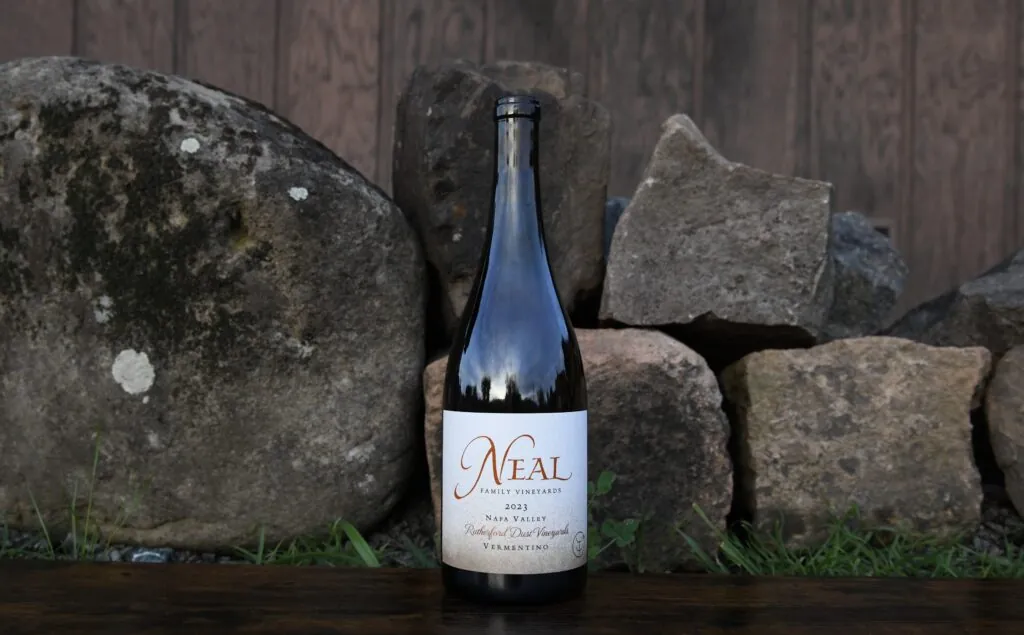
Vermentino Wine
Vermentino is a wine with so many faces, and yet only one identity. Many recognize it for the very intense, but not yet aromatic, bouquet, based on citrus fruits, white flowers, aromatic herbs such as thyme and basil and not too ripe yellow fruit. Above all, one will find the call of the sea inside this noble white wine, a true Mediterranean flair.
Unique in history and taste, Vermentino is a late-ripening grape and thrives better in a warm dry climate. It can adapt to different soils but in granite and rocks is where it performs the best. Vermentino, depending on the style, can be well paired with raw seafood, light or semi-cured cheese, up to stir fried white meat or fish in tomato sauce. Hence it can be good as an aperitif, light meal or even good to enjoy on its own, especially in the warm season.
Vermentino, nowadays, has gained international consent and fame as one of the top white wines.
Its Origin…
Vermentino is known as a white Italian varietal that is favored in Piedmont, Sardinia, Liguria, Umbria and some areas of Corsica. This beautiful variety has many synonyms in Italy including Favorita, Rolle, and many more. One article mentions that “Vermentino arrived in Gallura in the fourteenth century and coming from Liguria, was called “arratelau” in the past.” [1]

The exact origin of this noble grape variety is still debated, being found in Italy as well as in Spain, France, Portugal and Corsica, where it is the most cultivated grape variety. The origin story is yet to be officially written. Maybe it was born in Spain and then, passing through France, it arrived in Liguria and Sardinia or perhaps the variety spread in reverse. Others think it came with the Arabs during the conquest of Spain. With the origin still unknown, there are select places where the variety took root and thrives. Today, the wine is popular around the world. The saying in all regions is the same: drink Vermentino and you will be happier, it is known as the sunny wine!

Why we planted Vermentino in Napa Valley…
In 2019, Mark was feeling inspired to plant a few white heritage varietals on the Rutherford property with an innovative trellising system that he created in 1997. In short, the system allows white wine to be grown underneath red varietals. The first of the heritage varieties to be planted underneath the Cabernet Sauvignon was 1.9 acres of Vermentino.

When Mark was a kid, there was a cousin variety, Malvasia, that was widely planted in Napa. Malvasia was first planted by Italian settlers in the early 1900s, and much of it was later ripped out and replanted as Napa’s leading varietals of today- Cabernet Sauvignon and Chardonnay. Based on the similarities of farming this white varietal, Mark knew Vermentino would perform well in Rutherford- and it certainly did.
“In my younger years in Napa Valley, we were farming, and many white varieties that you don’t hear of today have been removed years ago, one particular is Malvasia. Through my studies and visiting Europe often, I found that Vermentino as grown in Sardinia had a lot of similar fruit looks taste and wines as the Malvasia grape that use to be grown in Napa Valley. When I thought of replanting, this idea of building a white wine program I thought to look into many of the southern Europe wine varieties. Many steps into vineyards have taken over numerous of trips looking tasting taking to growers and winemakers.”
The Vermentino leaves are dark green and pentagonal with the grapes being golden-yellow and hanging in pyramidal bunches. Our Vermentino vines are planted in the Rutherford Dust Vineyard in the Dual Varietal Trellis System. This system has its own cooler micro climate as its planted under the Cabernet Sauvignon vines within the same row. Learn information about the Dual Varietal Trellis System here.

2023 RUTHERFORD DUST VERMENTINO |
Elegant and fresh, the wine is perfectly balanced with acidity and richness, a versatile wine to share over enjoyable conversation and pair with an array of fresh cuisine ranging from sushi, shellfish, grilled prawns with salsa verde to elegant whole fish with pesto and early summer vegetables like artichokes, asparagus, and peas.
“With the soils, terroir and with the Mediterranean climate that Napa Valley has,
we felt that Vermentino would grow really well here. ” – Mark Neal
Since the time of DNA grape vine identification started many varieties have grouped together as “one”. For example, Vermentino is also known under the varietal synonyms Agostenga, Agostenga blanc, Brustiano, Brustiano di Corsica, Carbes, Carbesso, Favorita, Favorita bianca, Favorita Bianca di Conegliano, Favorita d’Alba, Favorita di Alba, Favorita di Conegliano, Formentino, Fourmentin, Garbesso, Grosse Clarette, Malvasia a Bonifacio, Malvasia Grossa, Malvasie, Malvoisie, Malvoisie è Gros Grains, Malvoisie Corse, Malvoisie de Corse, Malvoisie Précoce d’Espagne, Piccabon, Piga, Pigato, Rolle, Rossese, Sibirkovski, Uva Sapaiola, Uva Vermentino, Valentin, Varlentin, Varresana bianca, Vennentino, Verlantin, Vermentini, Vermentino bianco, Vermentino Pigato, and Vermentinu.
